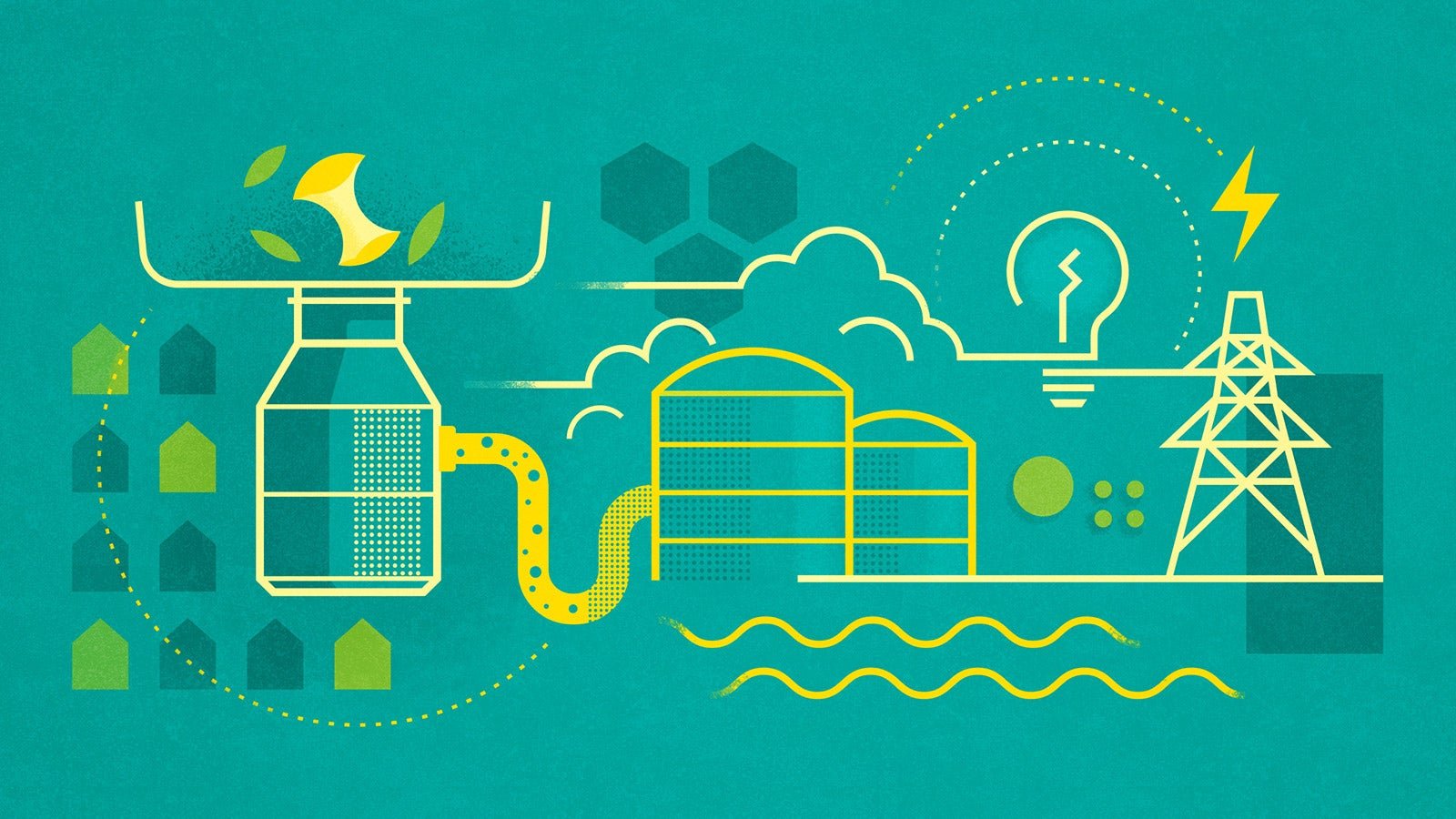The new alchemy of waste
Once upon a time, excess waste was felt to be just one of the inevitable results of advanced, consumer-driven economies. The US was Exhibit A, with factories, office buildings, and homes producing millions of tons of waste every year—a world-beating total of 4.4 pounds per person per day in 2012, according to the US Environmental Protection Agency. The result: sprawling, overloaded landfills and harmful greenhouse gases released into the atmosphere as the garbage decomposed.


Once upon a time, excess waste was felt to be just one of the inevitable results of advanced, consumer-driven economies. The US was Exhibit A, with factories, office buildings, and homes producing millions of tons of waste every year—a world-beating total of 4.4 pounds per person per day in 2012, according to the US Environmental Protection Agency. The result: sprawling, overloaded landfills and harmful greenhouse gases released into the atmosphere as the garbage decomposed.
That was then. Recycling has helped address some of the waste-to-landfill problem by diverting large amounts of paper, glass, metal, and plastic products from landfills. And now comes the solution to organic food waste as well—a solution that promises not only to limit the growth of landfills and cut greenhouse gas emissions but also to create a new source of cheap, renewable energy that can power America’s towns and cities far into the future.
Food waste is the single largest category of household garbage in the United States, with more than 36 million tons produced each year. As food scraps break down in landfills, they produce methane, a greenhouse gas 21 times more potent than CO2 in trapping heat in the atmosphere.
The solution is as close as the kitchen sink.
Roughly half of the households in the US have a kitchen sink disposal, but until now most Americans have thought of these devices as tools of convenience, when they’ve thought about them at all.
No more. Over the past several years, a number of US cities—from Tacoma to Chicago to Philadelphia and Boston—have been working to reposition the humble kitchen garbage disposal not as a device to carry away a problem but as the key to an important environmental and energy solution, one that can even save taxpayers money.
For the Milwaukee Metropolitan Sewerage District (MMSD), the goal is to source 100 percent of all the energy it needs to clean the region’s wastewater by capturing the methane produced by organic waste. If this sounds like a small feat, consider that 25 percent to 30 percent of a municipality’s electric bill is spent on wastewater treatment alone.
“The more food scraps you send us, the better off that we are,” says Bill Graffin of the MMSD “And the more energy we can produce, the less [fees] we have to collect to buy energy.”
Food scraps are turned into energy through a biological process known as anaerobic digestion, in which bacteria and other microbes feast on decomposing food that releases methane. While anaerobic digestion is nothing new and has long been a key component of modern wastewater treatment, only about 10 percent of these facilities in the US are leveraging that methane to produce electricity.
That is starting to change, with more US cities investing in anaerobic-digestion facilities that can capture the power they produce. Washington, DC, has committed $450 million for new wastewater facilities capable of producing enough electricity to clean all of the city’s water and sewage and go completely off the city’s energy grid.
Research by Emerson’s InSinkErator team is trying to define exactly what conditions produce the most energy, including the best mix of food wastes for anaerobic digestion and the optimal time to allow the microbes to do their work. If waste sits in the sewer too long, says MMSD’s Graffin, “you’re going to lose the amount of energy you can get.”
Modern wastewater- and sewage-treatment facilities are very hungry consumers of energy because the microbes—“bugs,” as Graffin calls them—used in anaerobic digestion need to be kept warm (100 degrees Fahrenheit) and oxygenated to do their jobs. “Cleaning water requires a tremendous amount of energy,” says Graffin, which is why the notion of using his “bugs” to actually make energy strikes him as a “fantastic project.”
As cities and residents expand their efforts to become more sustainable, creating energy from tossed-out food is a classic win-win, solving a problem while creating a resource. It’s also a great model of the virtuous circle—the more you put into it, the more you get out.
Graffin’s biggest problem is just getting the citizens and businesses of Milwaukee to put more food waste down the drain. “We’re constantly working with private industry and also with the experts at InSinkErator to figure out the best plan of attack for getting more of this organic material into our systems,” he says, “so we can not only create more power but also feed our bugs.”
This article first appeared on Emerson.com and was not written by the Quartz editorial staff.